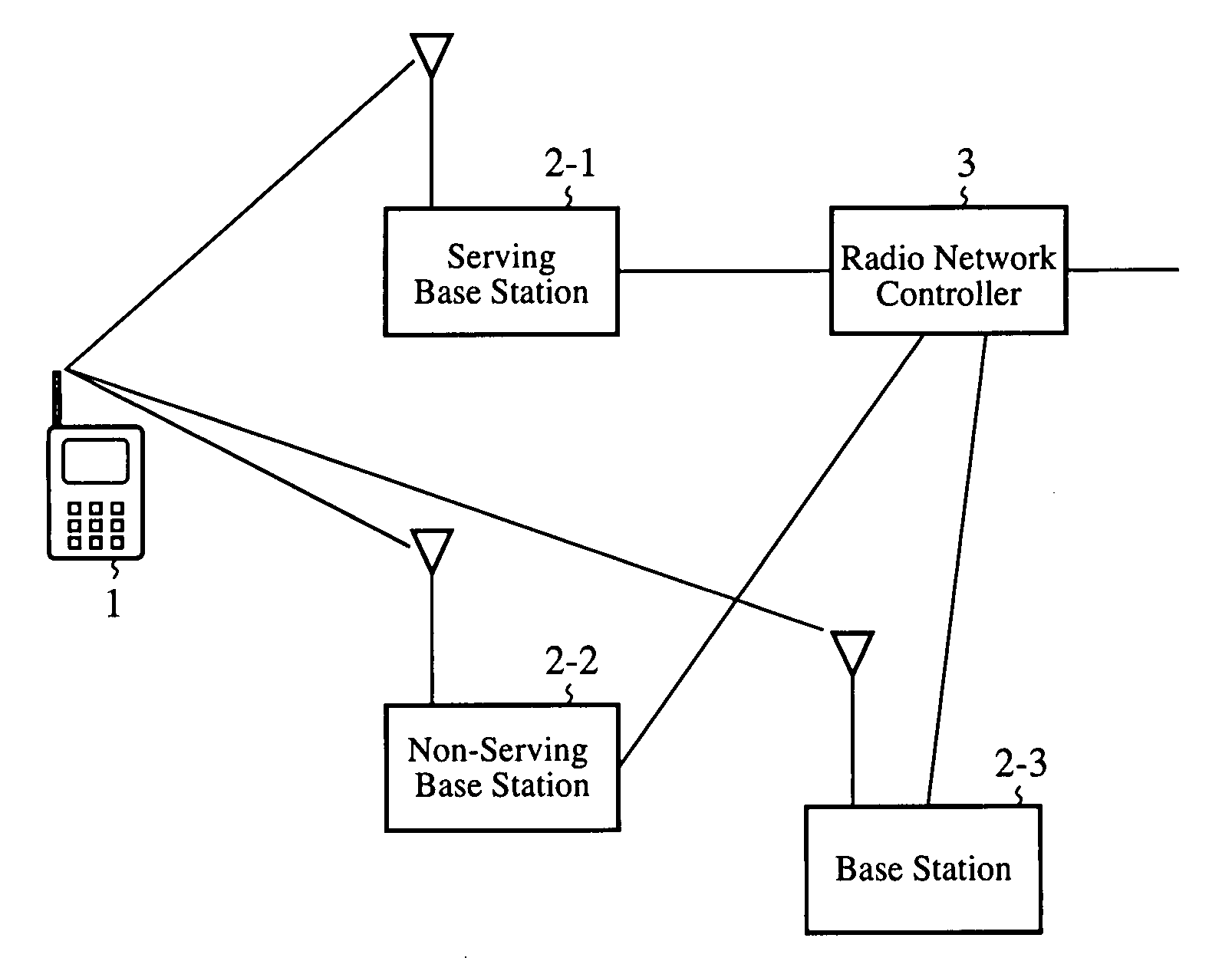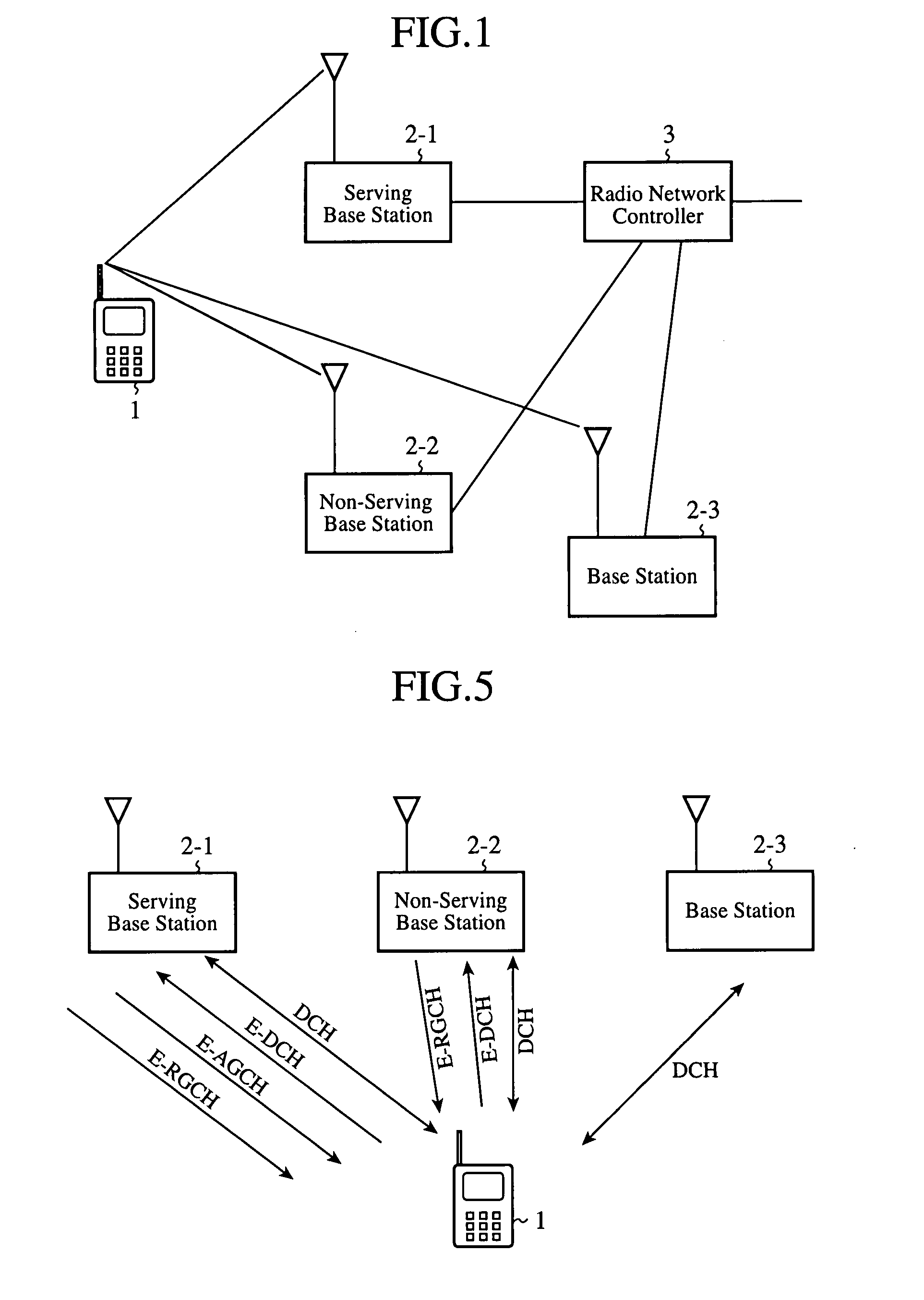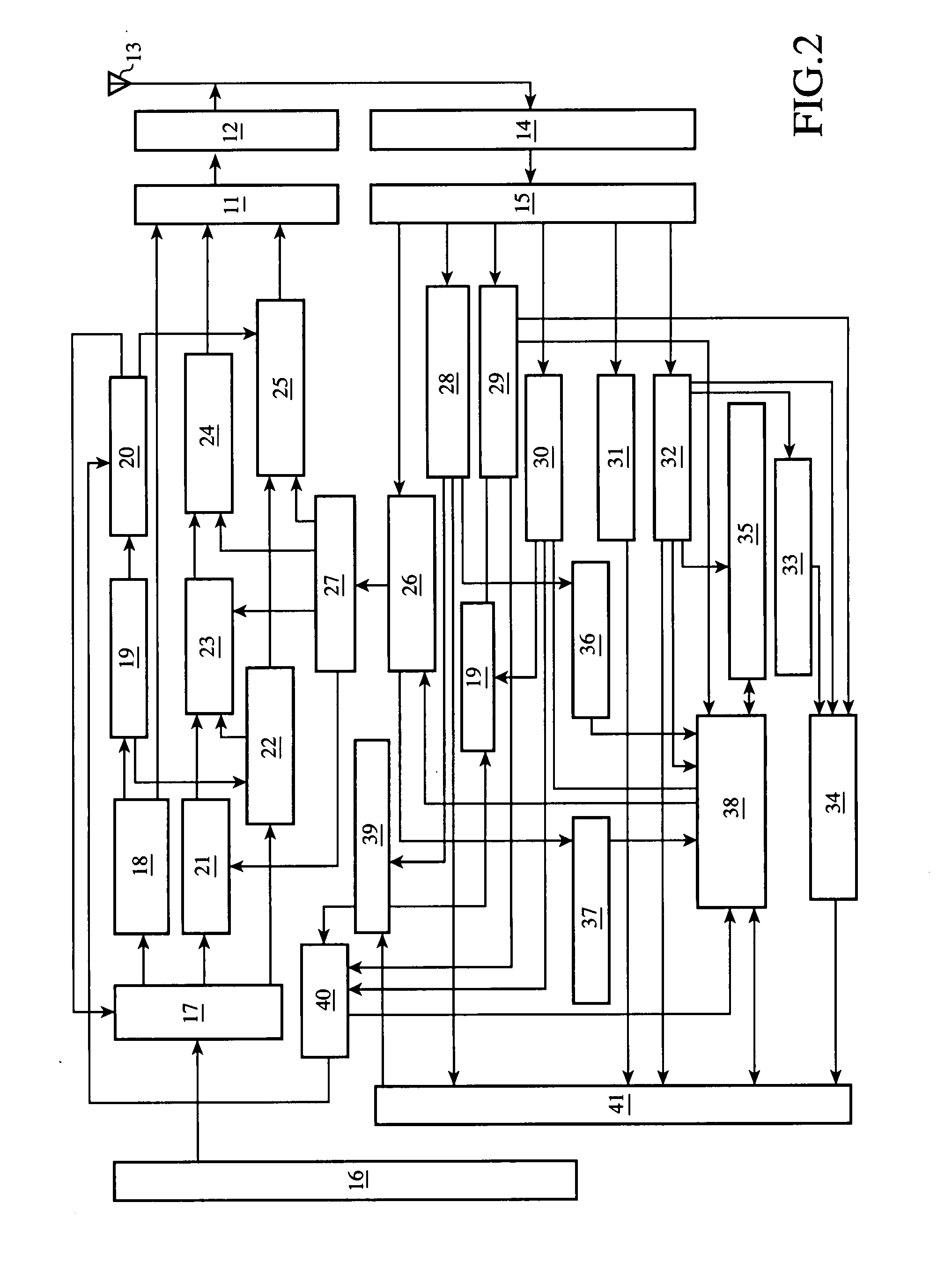Mobile communications system, handover controlling method, radio network controller, and mobile terminal
a mobile terminal and control method technology, applied in wireless communication services, wireless commuication services, electrical equipment, etc., can solve the problems of increasing the interference level of a base station with increasing the rate of data transmission, increasing the power of data transmission in the mobile terminal, and unable to control the interference level of a base station. achieve the effect of improving the transmission quality
- Summary
- Abstract
- Description
- Claims
- Application Information
AI Technical Summary
Benefits of technology
Problems solved by technology
Method used
Image
Examples
embodiment 1
[0087]FIG. 1 is a block diagram showing a mobile communications system in accordance with embodiment 1 of the present invention. In the figure, mobile terminal (user equipment) 1 is a terminal which the user uses, such as a mobile phone or a mobile PC.
[0088]A serving base station 2-1 has a scheduling function of controlling the data transmission timing and transmission power of the mobile terminal 1, and receives data transmitted from the mobile terminal 1. Hereafter, controlling transmission power does not mean power control with a high-speed closed loop, but is referred to as control of the allowable transmission power of the mobile terminal for the purpose of specifying a maximum transmission rate.
[0089]A non-serving base station 2-2 has a control function of controlling the transmission power for transmission of data of the mobile terminal 1, and receives data transmitted from the mobile terminal 1. However, when the data receiving conditions of the non-serving base station 2-2 ...
embodiment 2
[0324]In above-mentioned embodiment 1, the unit which takes charge of judgment of whether to change a base station 2-3 having a margin for the interference level which is not adequately provided to a non-serving base station is a mobile terminal 1, as previously explained. As an alternative, the unit which takes charge of the judgment can be a radio network controller 3.
[0325]Hereafter, a case in which the unit which takes charge of the judgment is the radio network controller 3 will be explained.
[0326]In the case in which the unit which takes charge of the judgment is the radio network controller 3, there is provided an advantage of being able to enable a base station 2 to measure the interference level therein.
[0327]Although there is a possibility that when a base station 2 signals mobile terminal 1, an error occurs because a wireless line is used, there is provided an advantage of being able to prevent an notification error from occurring in the interference level information if ...
embodiment 3
[0385]In above-mentioned embodiment 1, the mobile terminal 1 judges whether to add a base station 2 to the E-DCH active set, as previously explained. In this embodiment 3, an example in which mobile terminal 1 judges whether to exclude a base station 2 from an E-DCH active set will be explained. For a prior art active set for a dedicated channel, the same reference is used for both addition of a base station to the active set and an exclusion of a base station from the active set. For the active set in uplink packet communications (i.e., the E-DCH active set), because a base station which is the target for the exclusion is already placed in a state of reception via E-DCH, something related to E-DCH can be used as a judgment criterion, and more-exact judgment of an exclusion of a base station from the E-DCH active set can be carried out.
[0386]Hereafter, a method of selecting a base station 2 which is to be excluded from the E-DCH active set on the basis of the interference level of t...
PUM
 Login to View More
Login to View More Abstract
Description
Claims
Application Information
 Login to View More
Login to View More - R&D
- Intellectual Property
- Life Sciences
- Materials
- Tech Scout
- Unparalleled Data Quality
- Higher Quality Content
- 60% Fewer Hallucinations
Browse by: Latest US Patents, China's latest patents, Technical Efficacy Thesaurus, Application Domain, Technology Topic, Popular Technical Reports.
© 2025 PatSnap. All rights reserved.Legal|Privacy policy|Modern Slavery Act Transparency Statement|Sitemap|About US| Contact US: help@patsnap.com



